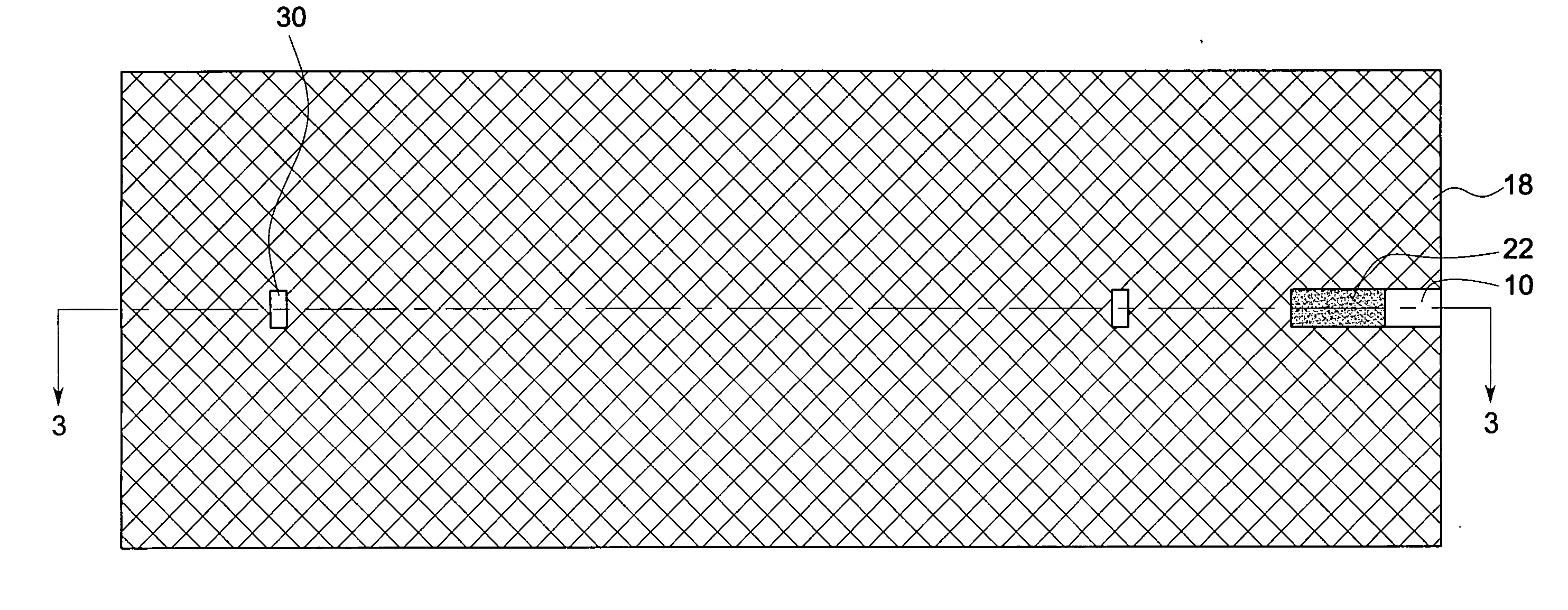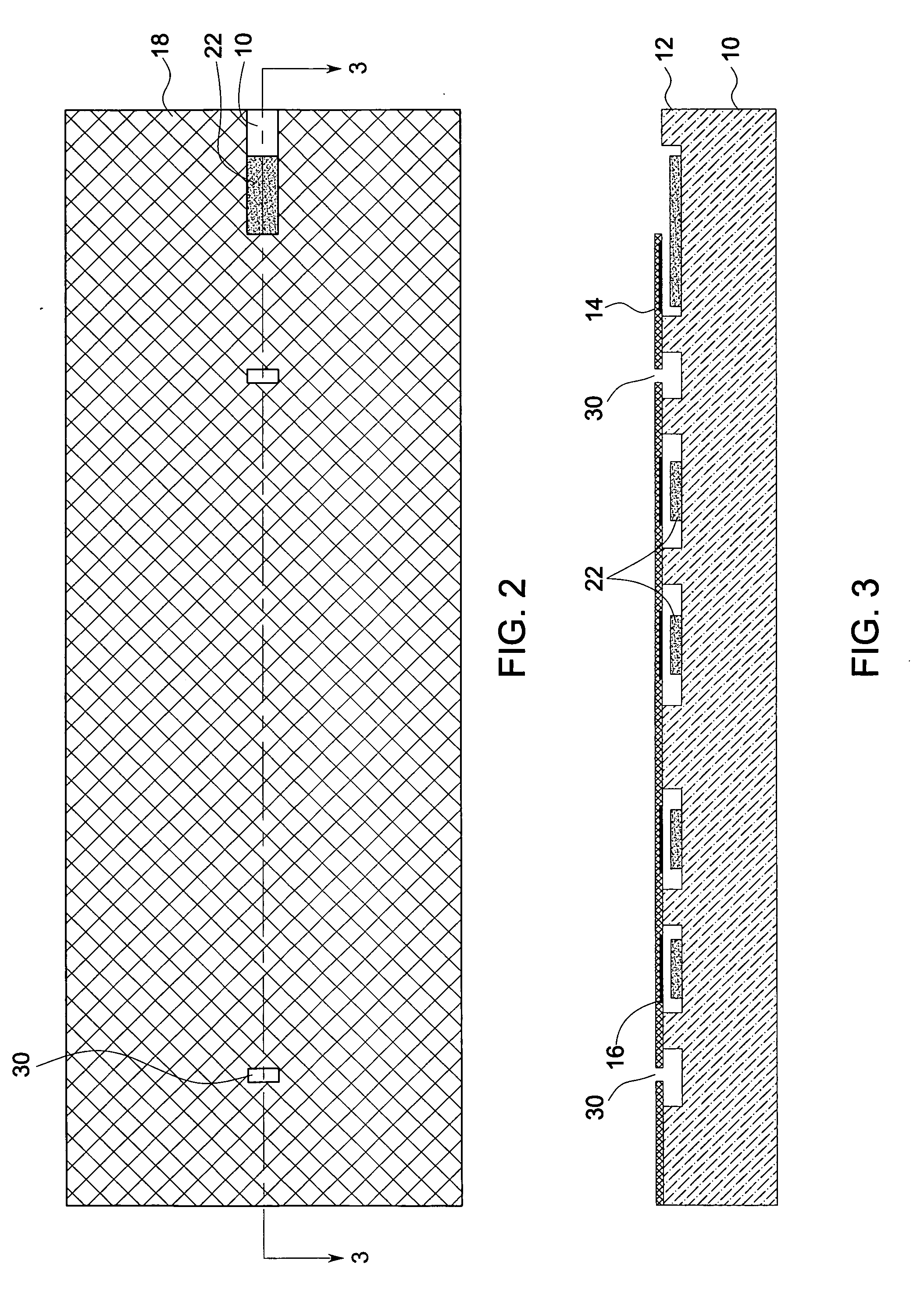Capacitive micromachined ultrasound transducer and methods of making the same
a micromachined ultrasound and transducer technology, applied in the field of diagnostic imaging, can solve the problems of reducing the parasitic capacitance and leakage current of the cmut cell, and reducing the yield of the devi
- Summary
- Abstract
- Description
- Claims
- Application Information
AI Technical Summary
Benefits of technology
Problems solved by technology
Method used
Image
Examples
Embodiment Construction
[0021] In many fields, such as medical imaging and non-destructive evaluation, it may be desirable to utilize ultrasound transducers that enable the generation of high quality diagnostic images. High quality diagnostic images may be achieved by enhancing the sensitivity and performance of the capacitive micromachined ultrasound transducers (cMUTs) by reducing the parasitic capacitance and lowering the leakage current during operation as a transmitter and a receiver.
[0022] Turning now to FIG. 1, a schematic flow chart illustrating steps involved in a method of making a cMUT cell is illustrated. As will be appreciated by one skilled in the art, the figures are for illustrative purposes and are not drawn to scale. In the illustrated embodiment, the method begins by providing a carrier substrate 10. As will be described in detail below, in certain embodiments, the substrate 10 may include vias (not shown) to provide electrical communication between the two sides of the substrate 10. Th...
PUM
| Property | Measurement | Unit |
|---|---|---|
| bonding temperature | aaaaa | aaaaa |
| temperatures | aaaaa | aaaaa |
| thickness | aaaaa | aaaaa |
Abstract
Description
Claims
Application Information
 Login to View More
Login to View More - R&D
- Intellectual Property
- Life Sciences
- Materials
- Tech Scout
- Unparalleled Data Quality
- Higher Quality Content
- 60% Fewer Hallucinations
Browse by: Latest US Patents, China's latest patents, Technical Efficacy Thesaurus, Application Domain, Technology Topic, Popular Technical Reports.
© 2025 PatSnap. All rights reserved.Legal|Privacy policy|Modern Slavery Act Transparency Statement|Sitemap|About US| Contact US: help@patsnap.com



